Not all new-build projects cross the finishing line. As part of our new-build steam survey, we look at those projects which will never see the light of day and examine what went wrong.
WORDS: THOMAS BRIGHT
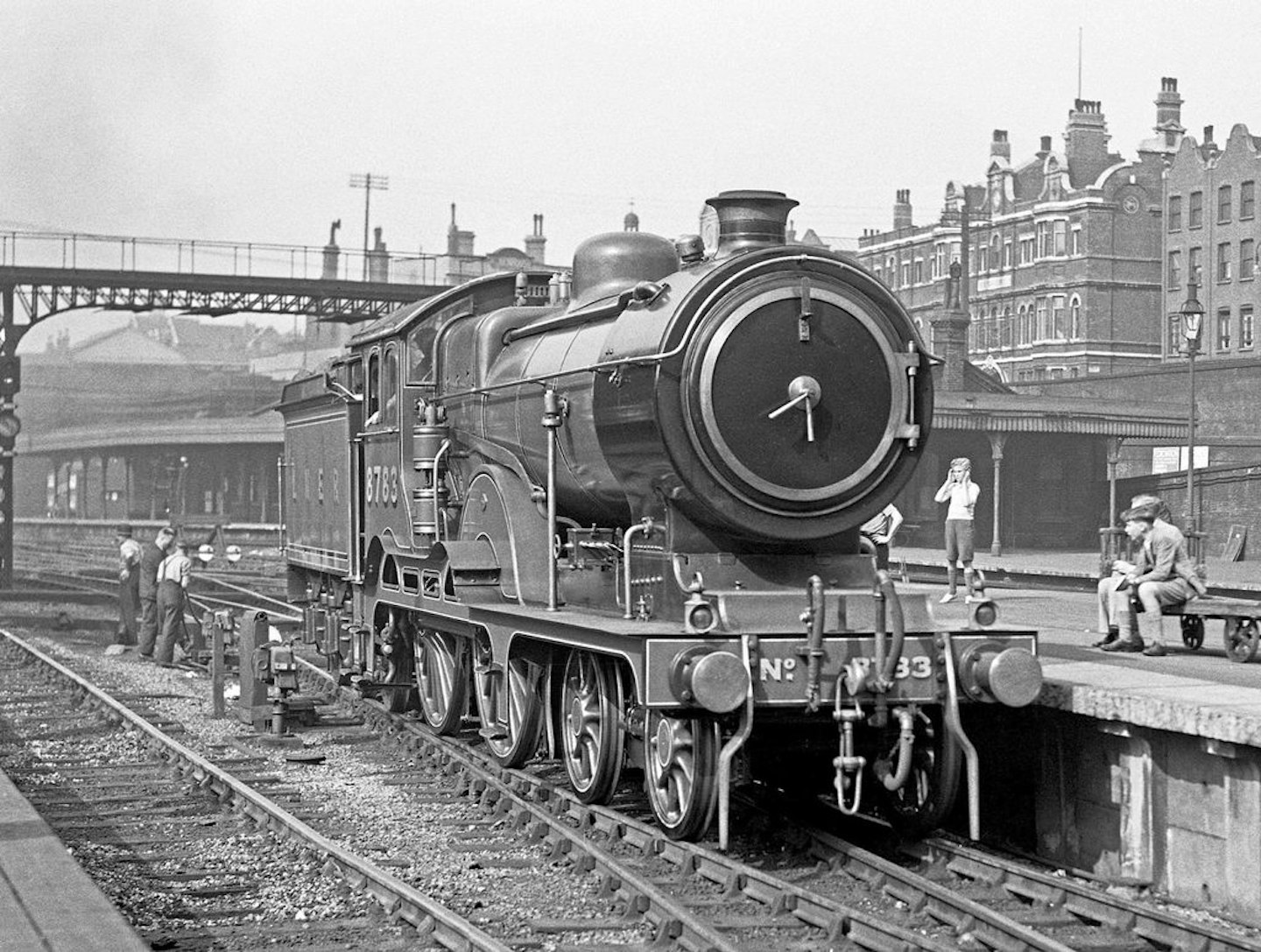
Building locomotives from scratch is not for the faint-hearted. For every new-build project that has reached completion, dozens more have fallen by the wayside – often without ever having made any physical progress. If we are to properly assess Britain’s various new-build projects, we should also examine those which have come to nothing.
Now, we could probably fill an entire magazine with the myriad new-build schemes that have been proposed over the years – anything from an LBSCR ‘E2’ 0 6 0T and a replica LNWR ‘Claughton’ to various Midland ‘2Ps’, a North Eastern Railway ‘Z’ class ‘Atlantic’ and a Caprotti ‘Black Five’, and countless others besides.
Almost all never progressed beyond a Facebook page or basic website, outlining their ideas and ambitions without any concrete fundraising or construction plans. They garnered a modicum of publicity before fading completely out of existence, having never cut a single piece of metal or raised a solitary penny.
Therefore, we shall ignore these various proposals and instead limit ourselves to projects which had either started physical construction and/or were actively fundraising at the time of our previous survey – as well as the serious proposals put forward by established groups already working on other new-build locomotives – finding out how far they progressed before calling it a day, and exploring why they were ultimately aborted.
LNER ‘B17’ No. 61662 MANCHESTER UNITED
-
Launched: 2011
-
Cancelled: 2020
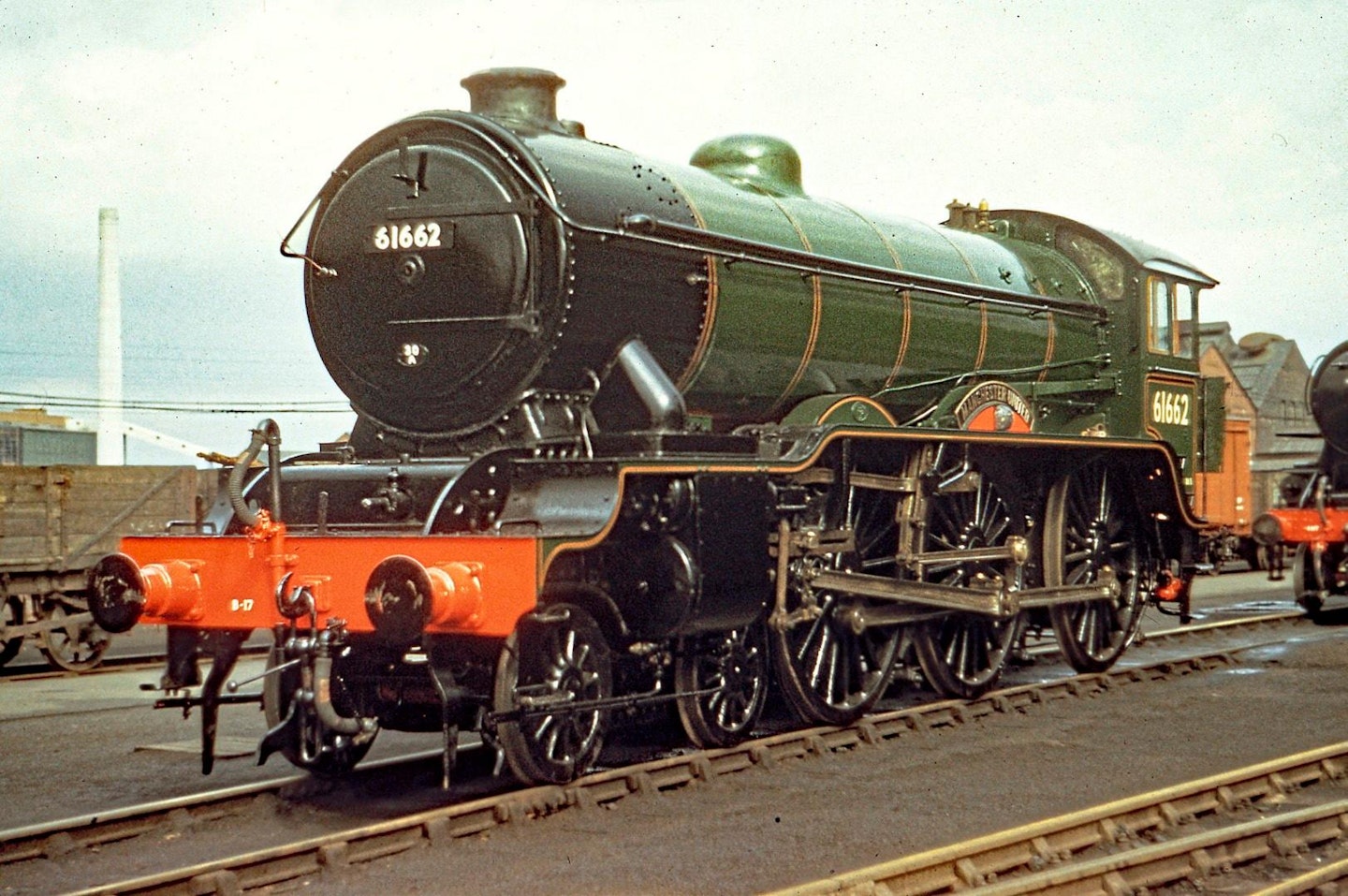
Perhaps the most high-profile of the cancelled projects is ‘B17’ No. 61662 Manchester United, insomuch as some physical progress had been made when it was abandoned. It’s an unusual project, as its origins, development, and fate are inextricably entwined with the other ‘B17’ new-build project – No. 61673 Spirit of Sandringham which, as outlined in SR562, is making good headway at CTL Seal in Sheffield.
The story begins in 2008 when members of the North British Locomotive Preservation Group Ltd voted to decide which North British-built locomotive represented the biggest gap in preservation. Gresley’s handsome LNER ‘B17’ 4 6 0s – the design of which was contracted out to North British, which also built the first ten ‘B17s’ – came out on top. A feasibility study into the possibility of building a new ‘B17’ was then carried out. Given the class’ links with ‘the beautiful game’ – Nos. 28482872 (BR Nos. No. 61648-61672) having been named after various football clubs, giving rise to their ‘Footballer’ nickname – it was decided to seek support from a major football club. Manchester United, arguably the most popular football team in the world at that time, was chosen, hence the decision to build the locomotive that once carried the club’s name, No. 61662 Manchester United.
“Manchester United agreed with no strings attached and we kicked it off,” recalls NBLPG chairman Ken Livermore. “David Buck got involved about this time and we soon realised that many enthusiasts were interested but did not like the name Manchester United!”
Indeed, the group approached other clubs – including Arsenal, Celtic, Darlington, Ipswich and Tottenham – about potentially using their names, but in 2010 decided to stick to its original plan to build No. 61662. Meanwhile, the late David Buck – a lover of all things East Anglian and former owner of ‘B1’ No. 61306 ‘Mayflower’ – set up the Sandringham Locomotive Company in 2008 “with a view to attracting enthusiast support” for Manchester United; this was eventually wound up in 2010 and morphed into the B17 Steam Locomotive Trust the following year, which had the new aim of building No. 61673 Spirit of Sandringham.
In the same year as the B17SLT was formed, the NBLPG announced its Manchester United project and launched the 61662 Appeal. “We agreed that the locomotive would (initially at least) be a static replica as we did not want to detract from the trust,” explains Ken. “I am a member of the trust myself and I’m very keen that they succeed.
“The 61662 Appeal received support from Manchester United FC in the form of donations of players’ kit and match balls and we received a couple of good features in their match programme.”

However, although a static replica was the initial intention, the ultimate aim was to eventually create a working ‘Footballer’ – estimated to cost £1.8 million to complete – to which end the NBLPG secured an original LNER Group Standard tender from a Doncaster scrapyard and a redundant ‘B1’ smokebox door. Indeed, the project’s now-defunct website claimed the replica Gresley 4 6 0 would “see regular service hauling special trains on Britain’s main lines” and “when not required for main line duties, we intend to hire the locomotive out for use on UK preserved railways”.
Construction of the static replica got under way at the 7¼in gauge Mizens Railway near Woking, complete with mock-up cab, smokebox, and boiler cladding to create the outline of a ‘B17’. “However, working membership for the project dwindled and by 2019 there were only a few of us turning up,” Ken recalls. Furthermore, the combined effects of outside storage and lack of maintenance during the Covid-19 lockdowns resulted in the mock-up Manchester United deteriorating considerably. “It soon became obvious that we could not continue as we were, and a vote was held among the 61662 members to decide the best way forward.”
In September 2020, 79% of NBLPG’s members voted to donate the LNER tender and other serviceable parts to the B17SLT, and abandon their aims to build No. 61662; only 2% voted to try and continue the project.
“With hindsight, maybe we should have dropped the 61662 Appeal when the Sandringham Loco Company was formed, but at that time we had a lot of Manchester United football supporters on board, and of course we were not to know how well the company/trust would fare,” says Ken. “For my part, I am delighted with their progress, and, from an NBL point of view, the trust locomotive will carry the ‘Sandringham’ name.”
Looking back, the NBLPG’s ‘B17’ project seems a little naïve. Trying to raise funds for No. 61662 when its ‘rival’ started attracting the lion’s share of support for a new-build ‘B17’ was always going to be an uphill challenge. As the continued lack of substantial progress on the Doncaster P2 Locomotive Trust’s planned replica of Gresley 2 8 2 No. 2001 Cock O’ The North has demonstrated, duplicate new-build projects are difficult to justify, particularly when one group has made more headway than the other(s). Plus, having competing projects only dilutes the financial support for both by splitting potential donors.
However, while it perhaps should have been abandoned when it became clear that No. 61673 was the most viable of the two ‘B17’ projects, the decision to drop Manchester United and donate the tender and other serviceable parts to Spirit of Sandringham was a fine example of preservation cooperation, and the NBLPG should be praised for recognising the writing on the wall and taking the mature decision to merge with its counterpart. Certainly, it has been for the benefit of those who wish to see a working ‘B17’, not only in expediting the completion of Spirit of Sandringham, but also the uplift in financial support the latter project has received since Manchester United was abandoned.
It’s also ironic that a project that started out as one locomotive, then split into two competing schemes, has now been reunited as a single entity once again.
GREAT EASTERN RAILWAY ‘CLAUD HAMILTON’/ LNER ‘D16/2’ 4 4 0 No. 8783 PHOENIX
-
Launched: 2011
-
Cancelled: c. 2024
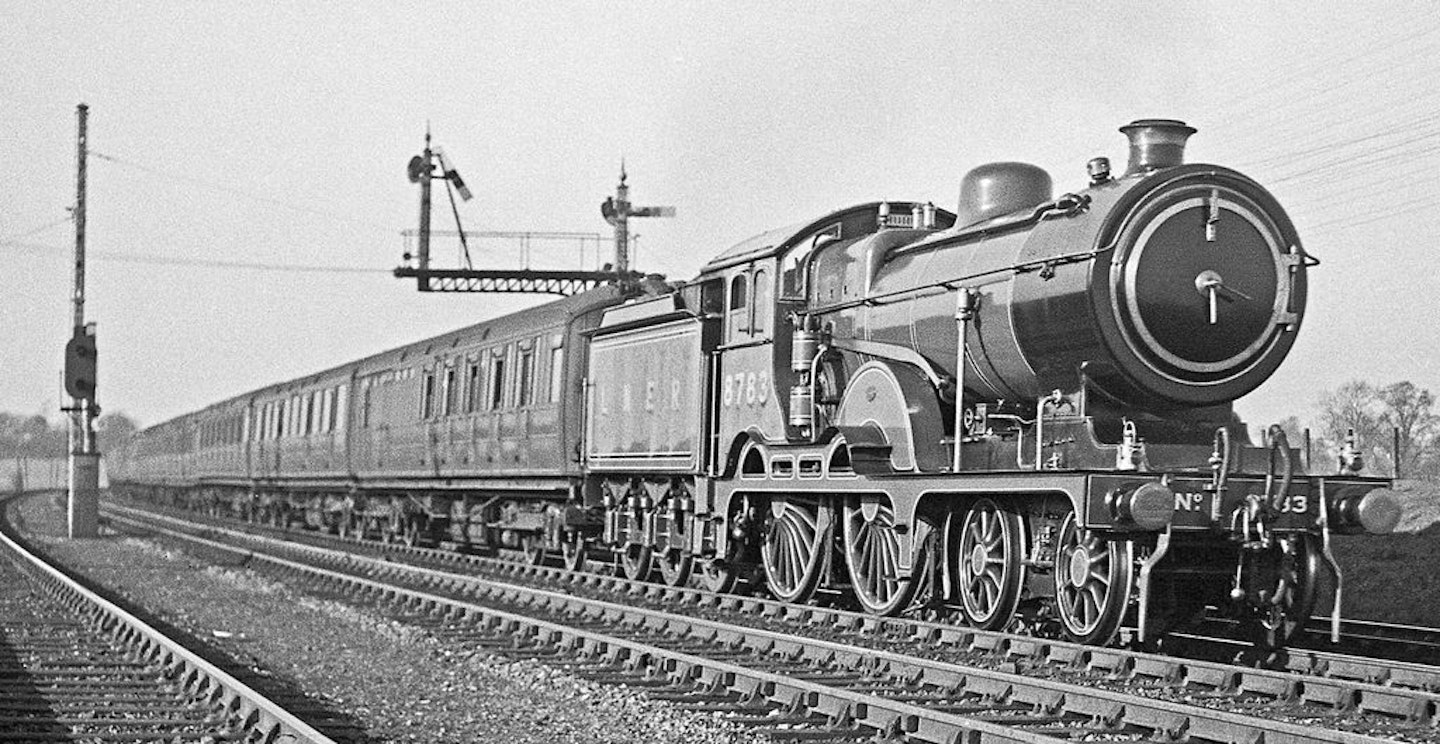
Another new-build project which started construction but was ultimately cancelled is ‘Claud Hamilton’ No. 8783 Phoenix.
These Great Eastern Railway 4 4 0s were incredibly handsome locomotives in any of their various guises, but especially in the ‘H88’/’Super Claud’ iteration with Belpaire firebox and valancing over the wheels. It was one of these engines – specifically No. 8783 – that the Claud Hamilton Locomotive Group was formed in March 2011 to recreate.
Of all the ‘Clauds’, No. 8783 was one of the most notable, as it was one of two ‘H88s’ regularly rostered to haul Royal Trains between Liverpool Street and Wolferton, and was thus kept in immaculate condition. It was also involved in a fatal accident on June 1 1939, when it collided with a lorry carrying straw over Cross Drove occupation crossing near Hilgay station on the King’s Lynn-Ely line; four passengers were killed in the subsequent derailment, after the leading coaches of the train collided with some wagons parked on an adjacent siding.
When originally launched, the CHLG had initially intended to name the replica No. 8783 ‘Lady Hamilton’, after the mistress of one of Norfolk’s greatest heroes, Admiral Nelson, but they subsequently revised this to Phoenix a few months later. From the outset, the group believed the ‘Claud Hamilton’ would take 10-20 years to complete, dependent on fundraising, and that No. 8783 “will be used primarily on heritage railways, however, it will be fitted for, but not with, APWS and OTMR etc to enable it to go main line more easily if Phoenix is deemed suitable.”
Progress during the early years of the project was slow, with the first part – a wooden Phoenix nameplate – only being completed in September 2013. The previous month, the group announced that it would be based at Whitwell & Reepham station, which would act as the parent company; as both organisations shared the same charity number, it has been hard to gauge just how much money the CHLG actually raised toward No. 8783.
The project reached its first milestone in August 2016 when metal was finally cut for No. 8783 – the front bufferbeam. This was followed in December 2018 by the bogie frame plates, then by the acquisition of an original Great Eastern Railway ‘Claud Hamilton’ whistle – believed to have come from ‘D16/2’ No. 1819 (later LNER No. 8819/2590 and BR No. 62590) – in 2019. However, this was the last piece of news from the group – neither the group’s blog or Facebook page have been updated since then.
Sadly, we can confirm the project is no longer active. This outcome is perhaps not surprising, as the group told Steam Railway for our previous survey in 2018 that it had only raised around £2,500 since 2011, a paltry sum against the estimated £1.5 million total build cost. At that rate of income, it would have taken several millennia to raise the anticipated target, inflation and rising material costs notwithstanding.
Former project chairman Dan Knights told SR in June 2024 about why the project was cancelled: “It wasn’t just lack of funds. Once Covid-19 hit, we became in charge of running the home railway, and we felt we didn’t have the time to do justice to the project. We also found issues in that there were hardly any internal motion drawings. Some drawings were marked as slide valve but were piston valve. We have some crude ‘D14’ drawings, but nothing reliable. The cost to design new motion would be huge, and I saw issues with other groups and felt it best to stop, really.
“Obtaining coal was very difficult at the time too. What would it be like when we were to finish? Should we try to look at heating up the boiler in a different way?”
While it is unfortunate that enthusiasts may never see a replica, working ‘Claud Hamilton’, the group should be applauded for taking such a pragmatic decision in the face of such serious obstacles. Indeed, other new-build groups would be wise to have similar introspection, as there are some projects that simply do not have the financial support to match their ambitions – at least not within a viable timeframe.
This was a well-intentioned scheme from a group of enthusiastic, young preservationists who wanted to attract and motivate their peers – a very noble and worthwhile endeavour – but it never generated the necessary momentum or support to make it viable, and thus success became ever more unlikely as the years went by and progress stalled. Alas, the failure of the Claud Hamilton Locomotive Group highlights just how difficult new-build steam really is, and that enthusiasm alone is not enough to make dreams into reality. Sadly, it seems a ‘Claud’ will remain a dream for now.
LMS FOWLER ‘4P’ 2 6 4T No. 42424
-
Announced: 2015
-
Cancelled: 2021
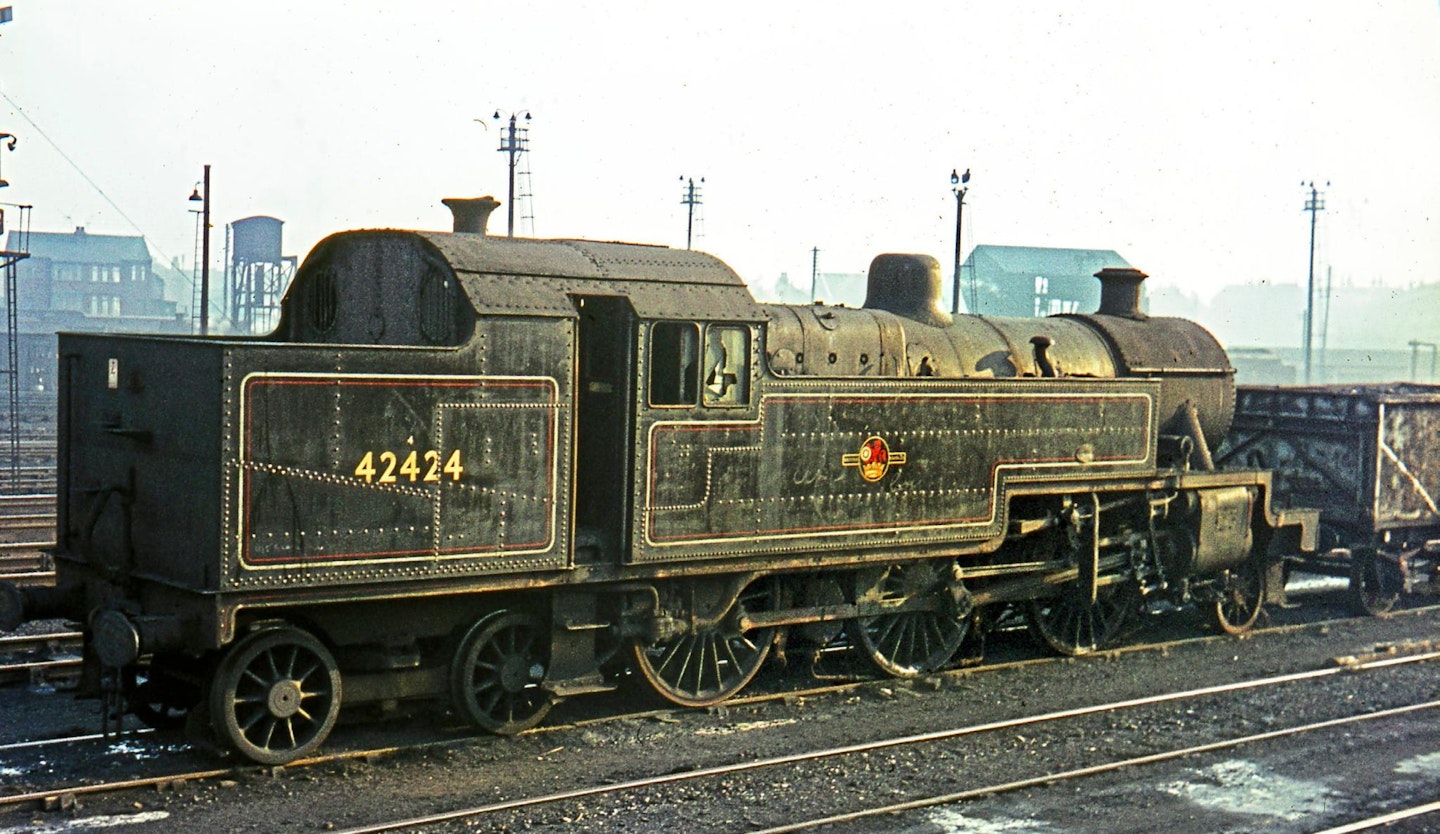
When it comes to missing links in British locomotive preservation, an LMS Fowler ‘4P’ 2 6 4T is arguably one of the biggest, as these versatile and handsome locomotives not only inspired the William Stanier’s own successful two and three-cylinder 2 6 4Ts (including National Collection example No. 2500), but also the Fairburn 2 6 4Ts (of which Nos. 42073 and 42085 have been preserved), and Riddles’ Standard ‘Class 4’ tanks, the latter being among the most successful and widely used BR Standard designs, working on all the BR regions almost until until the very end of main line steam.
A replica of No. 42424 was first announced in May 2015 by the LMS-Patriot Project – the group behind new-build ‘Patriot’ No. 5551 The Unknown Warrior – as a planned follow-up to the Fowler 4 6 0, with an estimated cost of £1.25 million. No. 42424 was the last of the 125 Fowler tanks to be built between 1927 and 1934; it was chosen as the one to replicate because it “was the last of a batch of 29 Fowler 2 6 4 tanks which incorporated glazed side windows on the cab and other detail changes initiated by Stanier. It is this design which the LMS-Patriot Company plans to build,” the group stated at the time. “No. 42424 was the first of a batch of Stanier 2 6 4 two-cylinder tank engines and it is for this reason that it is planned to reuse the last number in the Fowler 2 6 4T series.”
The LMS-Patriot Project also said the locomotive would “be built to run on heritage lines only, albeit to main line running standard. If enough interest is shown further engines could be built,” but adding that “fundraising will not begin until The Unknown Warrior is completed.”
However, following the much-publicised problems with_The Unknown Warrior_and consequent delay to its completion, the project announced in May 2021 that it was dropping its plans to build No. 42424, saying: “We believe starting another new-build in around 2024 at the earliest is not a wise decision. The locomotive would take around ten years to complete… for a sum of at least £2.5 million.”
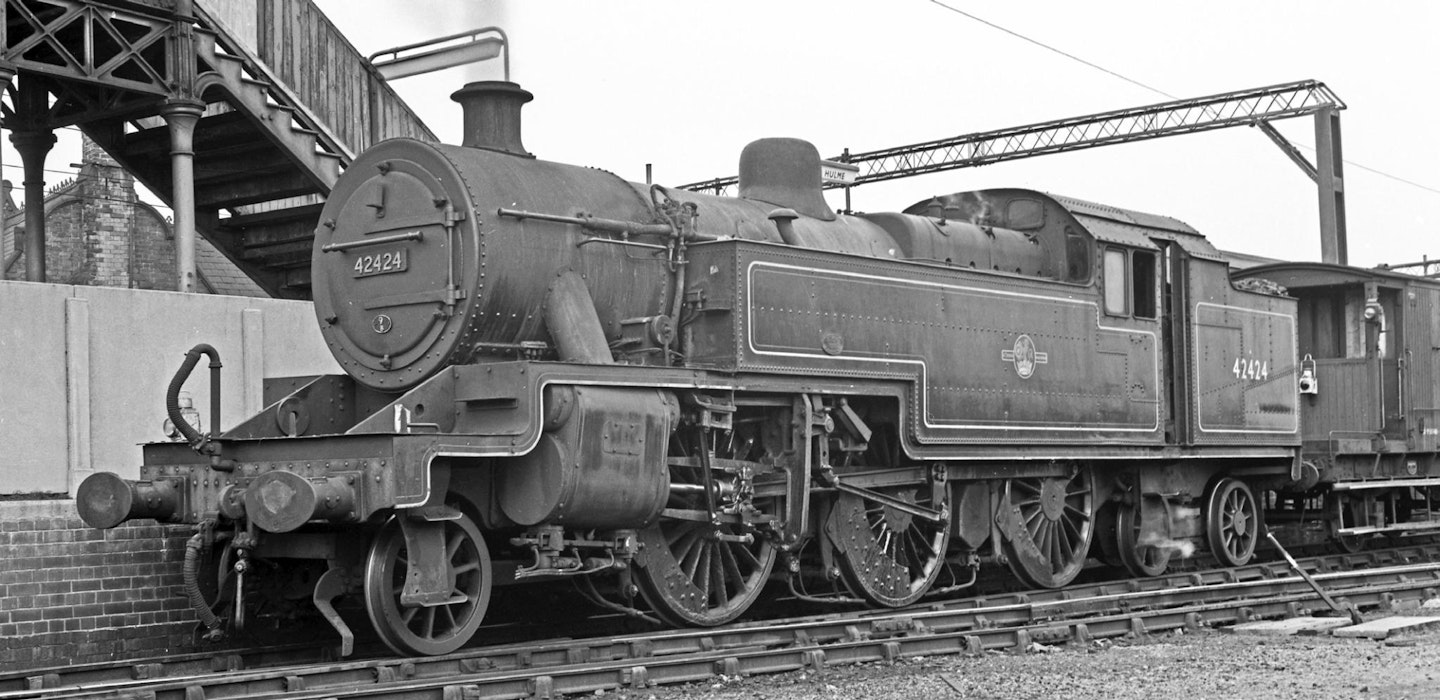
Project chairman Colin Hall added in a later interview with Steam Railway: “We decided to be open with our members and say our focus needs to be onto 5551, and not blithely raise expectations without something to back it up. Until 5551 steams, [42424 is] definitely off the table.
It’s never wise to say ‘never’ to anything because we could end up thinking again.”
So, while a replica Fowler 2 6 4T isn’t completely dead and buried, it is likely to be some years before the LMS-Patriot Project revisits the scheme – if ever – although that doesn’t preclude another group starting its own replica Fowler Class 4 tank project. But, if a replica Fowler 2 6 4T is never realised, we can at least take comfort from the fact that the design’s legacy lives on in the form of Northern Ireland’s sole surviving ‘WT’ 2 6 4T No. 4, which is essentially an LMS Fowler tank, albeit built to 5ft 3in Irish standard gauge.
In hindsight, announcing No. 42424 before The Unknown Warrior was complete was perhaps overly ambitious, particularly when the ‘Patriot’ was still years from completion – even before the engineering problems became known. A Fowler tank is a significant and important missing link, and would be a useful asset for most heritage lines (and on the main line, as No. 4 has proved in Ireland), but the decision to abandon it for the foreseeable future and focus on No. 5551 demonstrates the challenges of new-build steam, and that changing circumstances can obliterate the best-laid plans.
SOUTH EASTERN & CHATHAM RAILWAY ‘E’ 4-4-0 No. 516
-
Announced: 2019
-
Cancelled: 2022
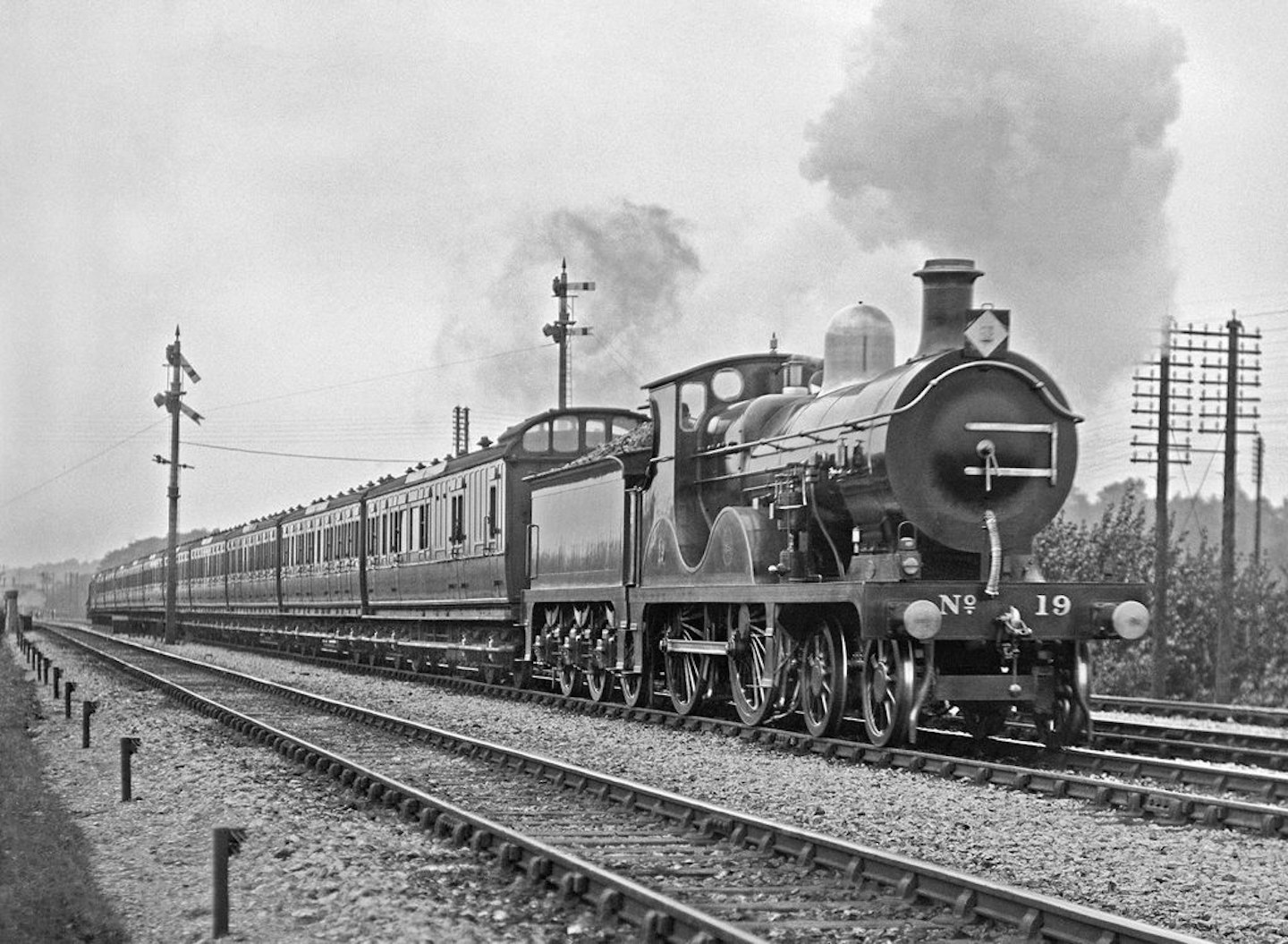
Like Fowler tank No. 42424, a replica of SECR Wainwright ‘E’ No. 516 was also intended as a follow-up scheme – in this case, as a sequel to Brighton ‘Atlantic’ No. 32424 Beachy Head. And, also like No. 42424, it was cancelled before it ever really got started.
The Bluebell Railway-based Brighton Atlantic Group announced in June 2019 that it intended to build a replica South Eastern & Chatham Railway Wainwright ‘E’ class 4 4 0 once Beachy Head was complete, choosing to reproduce No. 516 as not only did it represent the SECR at the 1908 Franco-British Exhibition, but it was also regularly used on Royal Train duties.
Numerous reasons were cited for selecting an ‘E’ over the other pre Grouping Southern designs the group considered, such as a Craven outside-framed 2 4 0, an ‘L’ 4 6 4T, a ‘C2X’ 0 6 0, a ‘D1’ 0 4 2T, a ‘D2’ or ‘D3’ 0 4 4T, an ‘I3’ 4 4 2T or a ‘J’ 4 6 2T: the relatively straightforward design; the availability of drawings; the commonality of design and parts with the surviving SECR ‘C’, ‘H’, ‘O1’ and ‘P’ classes; the ability to haul the majority of Bluebell services; and the availability of components, such as the tender wheelsets, brake linkages, half a steam reverser and brass dome cover. Estimated costs to complete the Wainwright 4 4 0 ranged from £1.2 to £2.5 million.
However, just three years after it was first announced, in the summer of 2022 the Brighton Atlantic Group said: “We have now abandoned our project to build a SECR ‘E’ 4 4 0. It would have been lovely to do. However, the fact is that the Bluebell is much more in need of overhauling some of its many out of--service locomotives.” Thus, any prospect of seeing a replica SECR ‘E’ seemingly evaporated.
Brighton Atlantic Project secretary David Jones explained to Steam Railway the rationale behind abandoning the ‘E’ at the time of Beachy Head’s launch last year: “The original idea was to build a LBSCR ‘K’ class ‘Mogul’. That would have been lovely, but having looked into it and realising that we’ve never have seen the end of it because it would have taken so long, we decided to abandon that. And then this idea of an ‘E’ class came up. That was largely to do with the fact that it had similar parts to the ‘C’, ‘H’ and ‘O1’, so we thought we could combine things and build an ‘E’. It would have been quite a useful engine – even though it wasn’t LBSCR – but in the end we decided that it was going to be too big a job.
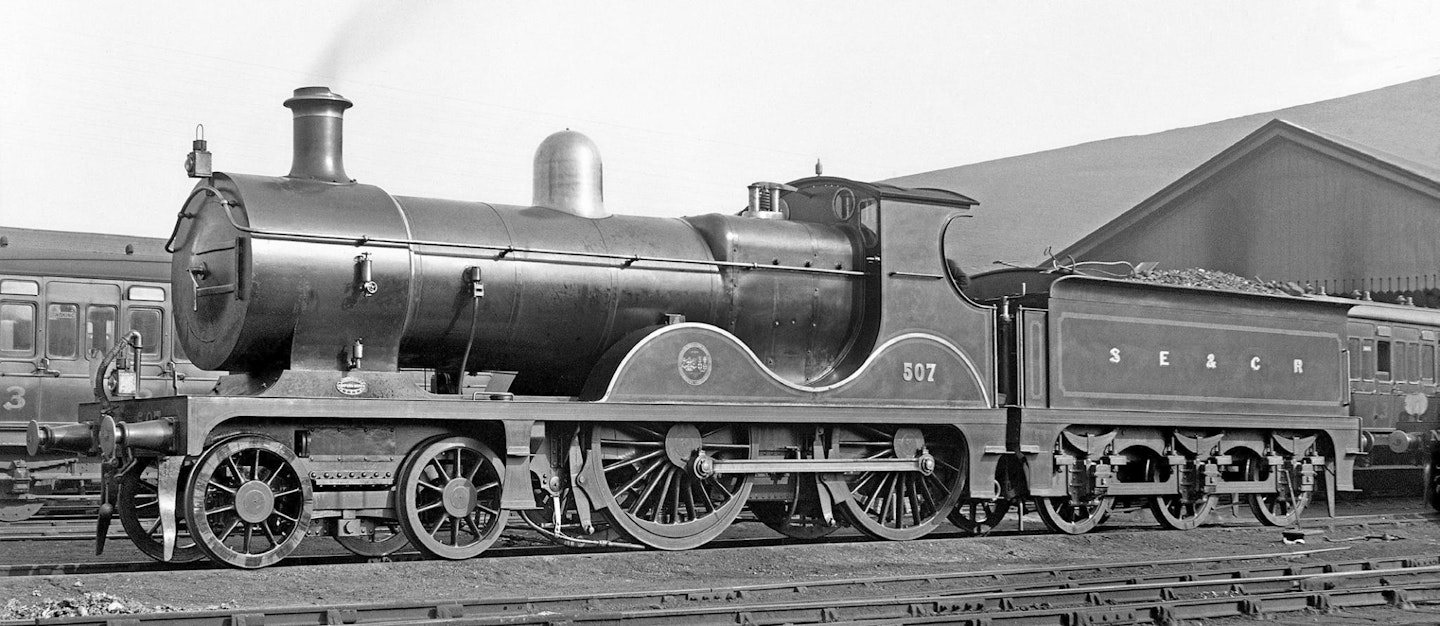
“So, we looked at other ideas, and there’s always been pressure on the Bluebell to get the Adams ‘Radial’ overhauled, so we thought we’d take that on instead. There wasn’t that much support for the ‘E’ actually, from within the Bluebell’s membership – they’re mainly Brighton people!”
Indeed, an ‘E’ was arguably something of an odd choice, given that the original locomotives didn’t exactly inspire a dedicated following, handsome though they were. Furthermore, by the group’s own admission, based on its age profile, “it is unlikely that the present team will see this project through”, so perhaps abandoning the ‘E’ in favour of something more realistically achievable was a sensible move.
And, not all is lost. While the ‘E’ may be no more, the group is instead taking on the overhauls of two London & South Western Railway veterans – ‘B4’ dock tank No. 96 Normandy and Adams ‘Radial’ No. 30583, neither of which have steamed for many years (since 1990, in the Radial tank’s case). As David told SR: “If we’d gone ahead with the ‘E’ class, nothing would have been done to the Adams – to either of the Adams engines, actually. In some respects, it’s been advantageous to both the ‘Radial’ and Normandy to abandon the ‘E’ class.”
Thus, No. 516’s demise means two pre Grouping stalwarts will get another lease of life in preservation, which is arguably more than--adequate compensation.
GREAT NORTHERN RAILWAY ‘J23’/ LNER ‘J50/2’ 0-6-0T No. 8905
-
Announced: 2013
-
Cancelled: 2019
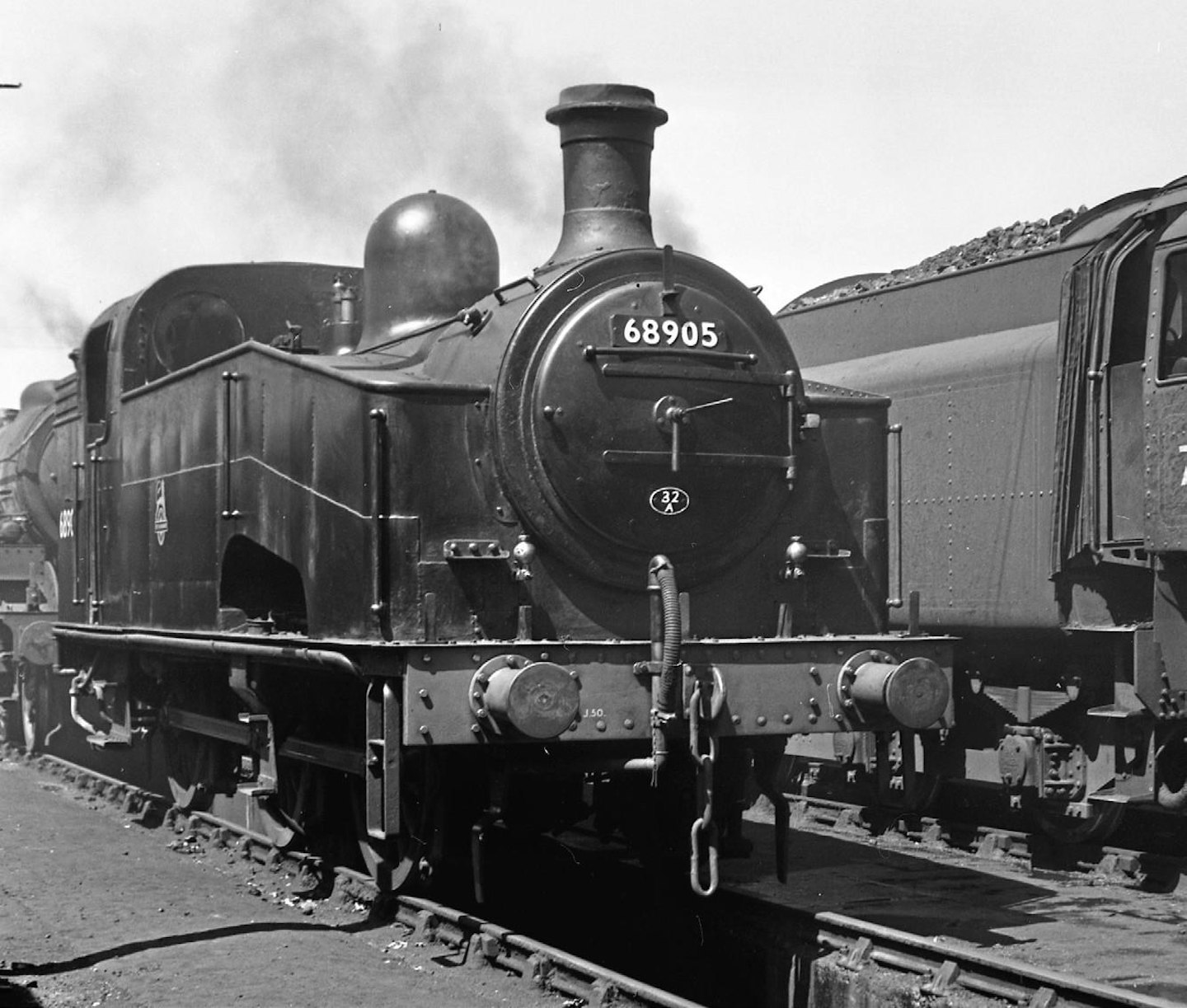
Another new-build project cancelled since our previous survey is the replica of LNER ‘J50’ 0 6 0T No. 8905.
Launched in April 2013 by a group of Bure Valley and North Norfolk Railway volunteers, “many different locomotive designs were looked at, but it was decided to rebuild LNER 0 6 0 ‘J50/2’ No. 8905… as it was a local engine to where the group members live and was an unusual ‘J50’ as she was based at places where very few of her sisters were allocated,” said the group’s website. It added: “The ‘J50s’ were very powerful for their size, having a tractive effort of 22,963lb/f – 1,000lb/f more than a ‘B12’. This will make it perfect for long passenger trains on preserved railways.”
For Steam Railway’s previous new-build survey in 2018, J50 Group chairman Jamie Ringwood estimated that building No. 8905 would cost “between £1.3 million and £1.5 million, depending on the cost of materials”, but that the group had only raised £895 in total at that point. Physical construction never got under way, with progress limited to creating some 3D drawings of the ‘J50’ tank, and acquiring a general arrangement drawing from the National Railway Museum.
However, the group announced in February 2019 that “due to circumstances beyond our control, it is with regret that The J50 Group will be closing.” The group did not elaborate further as to why the project was calling it a day, but considering it would have taken several thousand years to raise the money needed for No. 8905 based on the project’s income, the outcome was perhaps inevitable.
While it was great to see a group of young enthusiasts coming together to take on a new-build project, they perhaps underestimated the sheer scale of the challenges – and costs – involved.
What conclusions can we draw from these aborted projects? In the case of Manchester United, the lesson is arguably that duplicate new-build projects are a fool’s errand, particularly when one is substantially more advanced than another. The fate of No. 61662 should sound a stark warning for the Doncaster P2 Locomotive Trust, whose scheme to build a replica of No. 2001 Cock O’ The North is lagging considerably behind the A1 Steam Locomotive Trust’s own significantly more advanced Gresley ‘Mikado’, No. 2007 Prince of Wales. Although No. 2001 is planned to appear in its post-1938 ‘A4’-style streamlined form – whereas No. 2007 emulates Cock O’ The North’s original semi-streamlined configuration – the two designs are arguably not sufficiently different to warrant separate new-build projects. This is evidenced by the great disparity in financial support for both projects, as explored in SR562. With physical progress on Cock O’ The North being a fraction of that made by Prince of Wales, and with income far below what is required to complete No. 2001 within a realistic timescale, will the Doncaster ‘P2’ eventually join this list?
In the case of both the ‘Claud Hamilton’ and the ‘J50’, while you cannot fault the enthusiasm of those behind either project, nor their desire to inspire their peers, the failure of both projects demonstrates the importance of building sufficient momentum and gaining the necessary support early on. If a project fails to inspire sufficient support at the outset, then generating it later down the line becomes an increasingly uphill challenge.
As for the Fowler ‘4P’ tank and Wainwright 4 4 0, both were announced by well-established groups with years of experience in building steam locomotives. That both projects, each of which were sensible propositions, have since been abandoned suggests perhaps the appetite for new-build steam is waning. Certainly, the challenges facing any new project starting today are considerably more problematic than those facing projects launched 20 or 30 years ago, with ageing workforces and supporters alike being incompatible with most new-build projects’ 20-year gestation periods. In short, neither group felt their respective projects could be completed within the lifetimes of their teams, while continually rising costs for materials and labour made fundraising even more challenging than it was for their predecessor schemes.
It is also interesting that all the aborted projects listed here would have been ground-up new-builds – i.e. not relying heavily on legacy components such as pre-existing boilers, and instead following the Tornado path in being built from scratch. This is particularly interesting when you consider that the three standard gauge new-build projects to have been completed since Tornado – the ‘Saint’, the ‘Grange’, and Beachy Head – all benefited to varying extents from major pre-existing parts.
And how many more names will join this list? Since we started this latest survey, two more hitherto active projects have stalled – Highland Railway 4 4 0 No. 54398 Ben Alder and North Eastern Railway ‘K’ 0 4 0T No. 559. The latter managed to get further than any of the projects mentioned here, having a complete boiler made before the scheme stalled. However, while both are currently in abeyance, neither has strictly been cancelled. Ben Alder is officially “in stasis”, while No. 559’s builders are hopeful of re-engaging with the locomotive’s sponsor and restarting its construction. However, without a positive change in their circumstances, Nos. 559 and 54398 may yet join the ranks of failed new-build locomotive projects.
And what about the other currently active projects? Without mentioning any specific schemes, there are several projects whose current financial situations and lack of substantial progress suggest that they may also be destined to end up as well-intentioned but ultimately ill-fated ideas. While it may be too early to write them off yet, we need to see some substantial improvement in their fortunes to remove them from the endangered species list.
Each issue of Steam Railway delivers a wealth of information that spans the past, present and future of our beloved railways. Featuring stunning photography, exclusive stories and expert analysis, Steam Railway is a collector's item for every railway enthusiast.
Choose the right subscription for you and get instant digital access to the latest issue.

